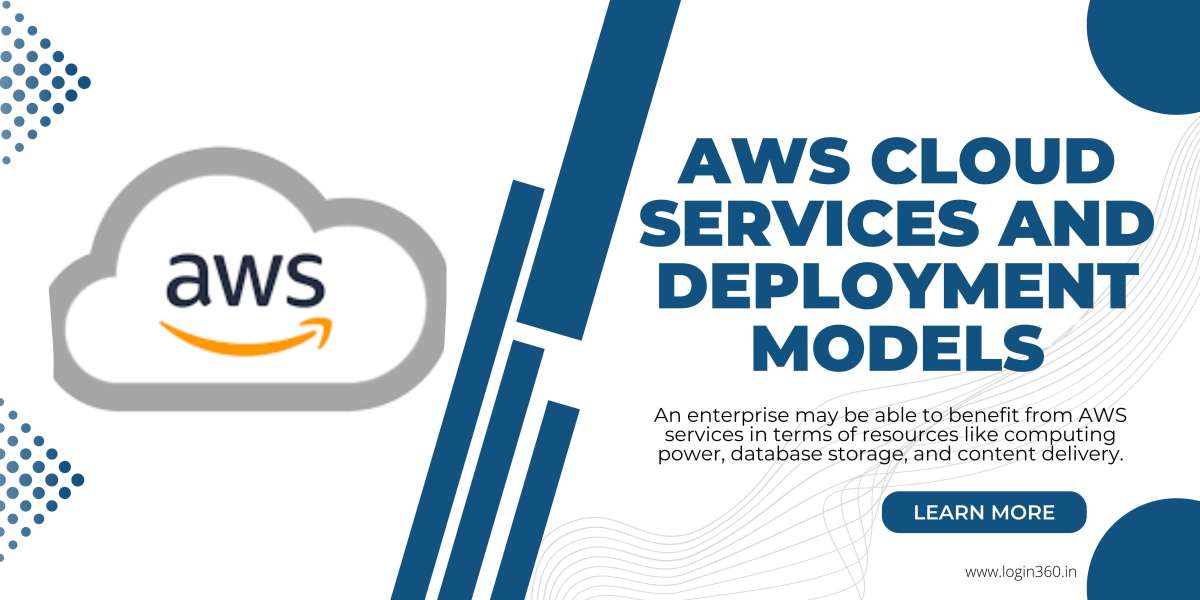What is AWS?
Amazon's cloud computing platform AWS (Amazon Web Services) offers infrastructure as a service (IaaS), platform as a service (PaaS), and packaged software as a service (SaaS) options. An enterprise may be able to access resources like computer power, database storage, and content delivery capabilities through AWS services.
AWS was launched in 2006 using the internal infrastructure that Amazon.com built to operate its online retail operations. AWS was one of the first companies to provide a cloud computing pay-as-you-go model that scales to suit customers' demands for processing, storage, or throughput.
What is Cloud Computing?
In order to provide online access to computer resources and centralized data storage, cloud computing joins large clusters of far-off servers.
Businesses can employ shared computing and storage resources owing to cloud computing, saving them from the development, management, and improvement of their own infrastructure.
The following features are made available through a system known as cloud computing.
- Users have the ability to provide and release resources whenever they choose.
- Resources can scale up or down automatically based on the load.
- Resources can be accessed across a network that has been appropriately secured.
- Cloud service providers can provide pay-as-you-go invoicing, in which clients are charged according to the kind of resource consumed and per user.
AWS Cloud Services
- IaaS
- PaaS
- SaaS
IaaS
- Infrastructure as a Service (IaaS) is what the phrase means.
- Customers can rapidly and simply provide processing, storage, and network connectivity thanks to it.
- Utilizing this service architecture, the clients can develop unique applications employing these resources.
PaaS
- Platform as a Service is referred to as PaaS.
- In this scenario, the service provider provides access to a number of services for its customers, including databases, queues, workflow engines, emails, etc.
- The consumer can then use these components to build their own applications after that.
- The service provider manages the services, resource availability, and data backup, allowing the clients to focus more on the functionality of their application.
SaaS
- SaaS, or software as a service.
- In this situation, third-party providers, as the name suggests, offer end-user apps to their customers along with some administrative features at the application level, such as the capacity to create and manage users.
- A certain amount of modification is additionally permitted, such as the use of the client's own corporate colors and logos.
AWS Deployment Models
- Cloud
- Private Cloud
- Hybrid
- On-premise
Cloud
Cloud-deployment models are used to describe applications that are entirely installed and run on the cloud. There are two entrances to the cloud. In the beginning, they are either created in the cloud. Second, the company moves its current infrastructure to the cloud. The basic infrastructure elements can be used to build cloud-based applications. An ideal high-level service provides core infrastructure abstraction based on the scaling, administration, and architectural requirements.
Private Cloud
Contrary to public clouds, private clouds have the exact opposite deployment model. In a one-on-one environment, there is just one user (customer). You are not required to permit others to use your equipment. A private cloud and a public cloud differ in terms of how the hardware is managed. The term "internal cloud" is widely used to describe the capability of accessing systems and services inside a certain boundary or organization. The cloud platform is utilized in a highly secure, cloud-based environment that is supervised by an organization's IT department and protected by strong firewalls.
You have more freedom and power over the cloud's resources with the private cloud.
Hybrid
The hybrid deployment strategy is a way to use infrastructure and apps to link more dated on-premises resources with cloud-based resources. The most common hybrid development strategy connects an organization's internal core system to the cloud and its on-premises infrastructure to expand its complete setup into the cloud. A hybrid approach is the best choice for firms who are just integrating AWS if they want to experience steady company growth.
On-premise
The on-premises deployment technique is utilized to give businesses the optimum resource utilization. Private cloud is the term used to describe the broad idea of on-premises resource delivery that makes use of a number of virtualization and resource management approaches. Despite the fact that the on-premises deployment does not adequately capture the vast advantages that cloud computing provides, the ability to enable connectivity between on-premises infrastructure and cloud-ready resources makes it a highly sought-after deployment strategy by illustrious corporations. Although it may initially appear to be similar to the legacy IT architecture, it really increases resource utilization by relying solely on on-premises technologies like application management and virtualization.
Conclusion
AWS cloud offers a wide range of services to aid users in managing and automating their operational operations. Improved security, lower overall expenses, consistent business growth, and more productivity are just a few benefits that cloud integration may bring about.



